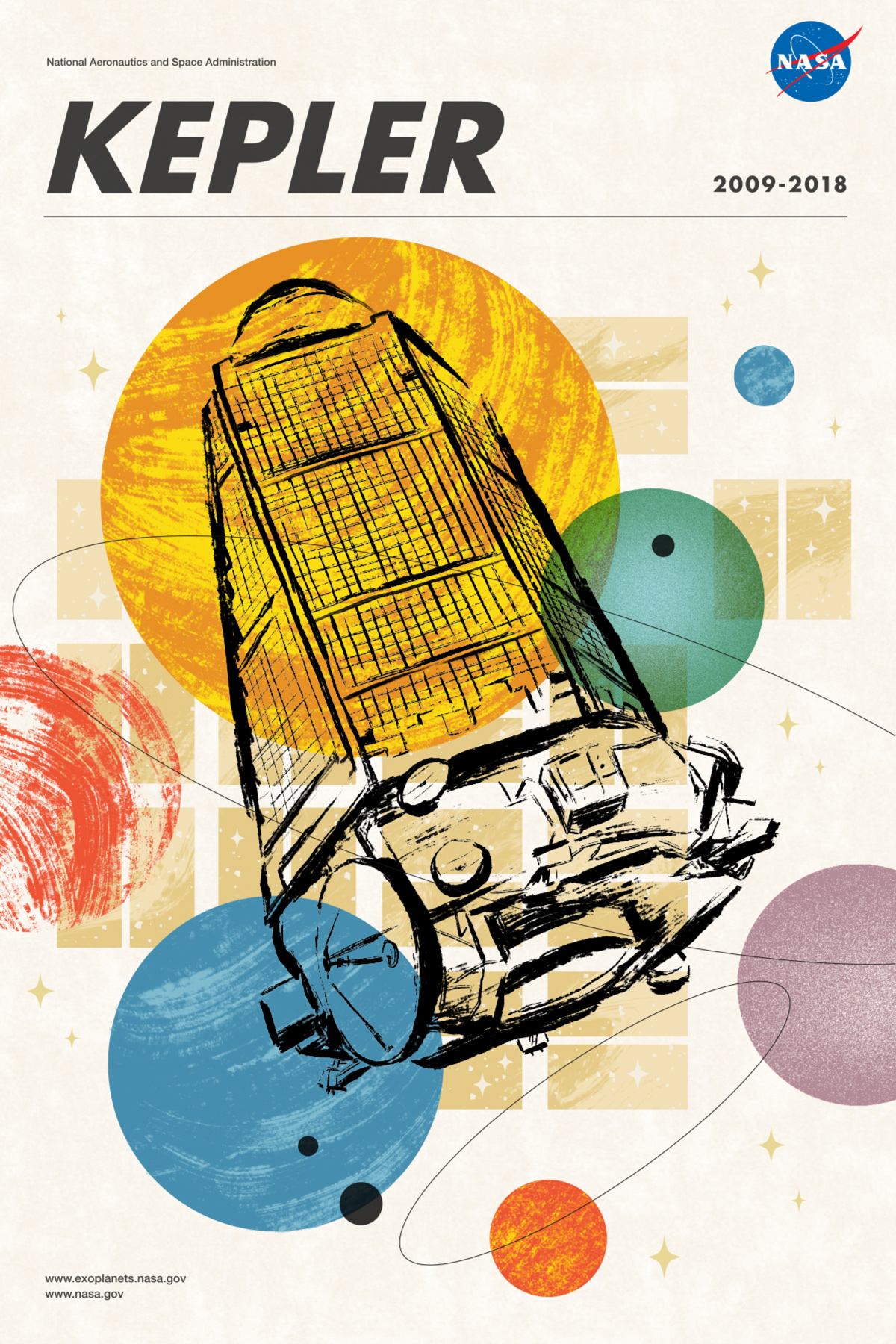Kepler Space Telescope Poster

| Credit | NASA/JPL-Caltech |
|---|---|
| Language |
|
Launched in 2009, the Kepler Space Telescope taught us that our galaxy has more planets than stars. Initially, Kepler stared at a single patch of sky for four years, watching for shadows: the extremely tiny dip in starlight as a planet crosses the face of its star. Kepler's field of view contained more than 150,000 stars, and the telescope saw thousands of such shadows, known as transits.
The telescope lost much of its pointing capability in 2013, and soon began its second mission, known as K2. In K2, Kepler looked at stars in the plane in which our solar system’s planets orbit, and changed its view more often. The spacecraft continued discovering new planets around other stars, or exoplanets, until it was retired in 2018 after running out of fuel. Kepler holds the record for discovering the most planets of any exoplanet mission: more than 2,600. Kepler revolutionized the field of exoplanet science, showing us that exoplanets have far more fascinating variety than we imagined.

